Title: Water on The Moon, I. Historical Overview
Authors: Arlin Crotts
First Author’s Institution: Columbia University
For generations, people have wondered about the presence and nature of water on the Moon. Astronomers are still working to answer that question and three relevant papers appeared on the ArXiv today. The first paper in the series (the topic of today’s astrobite) gives a historical overview of the past 150 years, detailing the general scientific consensus about whether or not a significant amount of water exists on the moon. Apparently, it has been a somewhat bumpy ride through history. There are many fascinating details which I do not have room to discuss (for that you should go to the article itself), but to give you a general sense I have divided the past 150 years into four different “eras” and offer a brief description of the advances of thought which took place during each.
The Early Years (pre- 1950s):
As early as the mid- 1800s several scientists were of the opinion that the moon contained only minimal amounts of water and air. Their main argument centered on the lack of any observed lakes, streams, clouds, or weather of any kind. Their evidence became more advanced when in the 1890s, William Pickering was able to detect a small atmosphere around the moon by examining the shadows produced when Jupiter and Saturn were occulted by (i.e. passed behind) the moon. Based on his results, he concluded that the atmospheric pressure on the moon was only 1/4000th of Earth’s. With such a small atmospheric pressure it was believed that any ice present on the surface of the moon would quickly sublimate out into the vacuum. Thus, with a few exceptions, scientists prior to the 1950s believe the moon was very dry.
The Era of Moon Orbiters (1960s):
It wasn’t until the dawn of several space programs in the mid-1900s that any “respectable” scientists questioned the idea of a dry moon. The first lunar orbiters (such as the Ranger 7 and 9, and Lunar Orbiter 4 and 5 spacecraft) brought back detailed pictures of the lunar surface, some of which showed interesting river-like features called rilles as well as filled or flooded craters (See figure, right). These features appear to be formed from flowing liquid, and could be explained by either water or lava flows. Several scientists, including Nobel laureate Harold Urey, were fervent proponents of the former theory. This opinion was not without quite a bit of controversy, however, and on one occasion Urey included the following in a letter to Nature, “Because many people are not aware of this evidence [for water on the Moon] and suggest that the effects are caused by other liquids, that is, lave, dust-gas, or possibly even vodka, a brief discussion of the evidence may be in order.”
The Moon Landing Era (1970s):
The controversy surrounding the origin of the lunar rilles was only resolved with the ability of the Apollo missions to directly observe the features. Apollo 15, in particular, visited Hadley Rille (see figure below) and determined conclusively that it was produced from flowing lava, not water.
Even beyond the rilles, however, the Apollo missions had a huge influence (for the next 30-some years) on the amount of water scientists thought the moon contained. Specifically, they helped to again convince many scientists that the moon was almost devoid of water. The evidence seemed plentiful, and it included: (1) instruments left on the moon which indicated the atmosphere was less than 1% water, barely detectable, (2) reports that most lunar rocks brought back to Earth contained only a few parts per billion water, and (3) the lack of other low melting point or volatile elements in the lunar samples, which are expected to trace water abundance. Additionally, during this time period, the theory that the Moon was formed when a Mars size object collided with Earth (the Giant Impact hypothesis) was gaining popularity. This theory could easily explain the lack of water and volatile elements on the Moon – they were literally boiled away during the collision. Thus, the idea of a dry moon became widely accepted. To quote the author, “The Big Whack and Dry Moon were copacetic together.” (i.e., the theories were highly compatible).
Intriguingly, there were several observations made during this time period which indicated the true amount of water on the moon may much higher, but the status quo was apparently so strong that they were either explained away or ignored. Included in this was a lunar core sample taken in 1976 by the Soviet mission Luna 24 (the last mission to land on the moon and return to Earth in the 20th century). Analysis of the core sample found that it was 0.1% water by mass, with the faction increasing with depth below the lunar surface. However, as described by the author of this review, no other author has ever cited the Luna 24 results.
The Modern Revolution (post- 2007):
And that was how the field sat for thirty some years. Almost everyone was convinced that the Moon was incredibly dry. As late as 2006 a review article on the moon quoted that the moon was at most one part per billion water. However, starting in 2007 several important discoveries were made:
- The Indian Lunar probe, Chandrayaan-1 discovers hydration across the lunar surface. This satellite contained the Moon Minerology Mapper, a visual and infrared spectrograph. It found a large amount of emission coming from the moon (especially the poles) near 2.9 microns – one of the vibrational energy states for water. This along with previous missions from the 1990s which mapped the moon with radar and infrared cameras gave credence to the idea that large amounts of water might be concentrated at the lunar poles.
- The Apollo samples were re-analyzed. As it turns out, many of the Apollo lunar rock samples had a much higher water content than one part per billion. However, because much of this water had very similar isotope ratios to Earth water, it was assumed that most of it was actually contaminants from Earth (many of the sample containers had been covered in lunar dust, and hence did not seal as they were designed). However, in 2008 several samples were analyzed with more modern technology which allowed scientists to examine the composition of the rock (as opposed to vaporizing the entire sample and losing all spatial information as was done in the 1970s). From this they found the water was more concentrated in the center of the sample, and hence likely lunar (not terrestrial) in origin.
These and other forms of evidence began to change the opinions of in the field. However, the final nail in the coffin for many came from:
- The LCROSS mission. You may have heard of this one: The Lunar CRater Observation and Sensing Satellite. In 2009 NASA slammed a probe into a lunar crater in order to, well… see what it kicked up. And it was completely successful. Observations of the material kicked up in the explosion indicated that it was about 5.6% water by mass.
And that is were we stand. There is a significant amount of water across most of the lunar surface, and an even higher concentration at the permanently shadowed poles. We’ve certainly come a long way in 150 years, but there are still many unanswered questions, such as the origin and nature of the lunar water.
If you enjoy this overview I encourage you to read the article is itself as well as the next two articles. Part II describes our current understanding of the nature of the water on the moon and Part III reviews what is and is not known about volcanic activity and outgassing on the lunar surface.


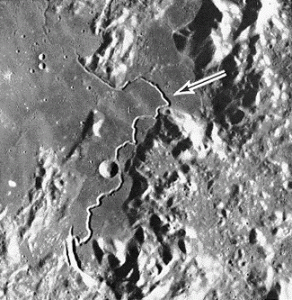
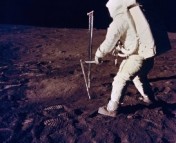
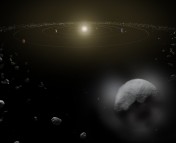
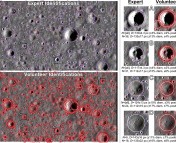
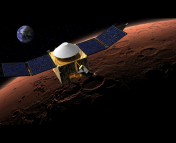
Well, the evidence provided yet are not sufficient enough to prove that water exists on the moon’s surface. Still more detailed research is required to figure out the exact picture of moon’s surface.